Volcanoes
A volcano is a mountain that opens downward to a reservoir of molten rock below the surface of the Earth. When pressure builds up, eruptions occur. Gases and rock shoot up through the opening and spill over or fill the air with lava fragments. Eruptions can cause lateral blasts, lava flows, hot ash flows, mudslides, avalanches, falling ash, and floods.
Types of Volcanoes
- Shield Volcanoes: These are large, broad volcanoes with shallow-sloping sides. They are formed by the flow of low-viscosity basaltic lava.
- Stratovolcanoes: Also known as composite volcanoes, they are tall, steep-sided volcanoes built by both lava flows and explosive eruptions.
- Cinder Cone Volcanoes: These are the smallest type of volcano, and they often form on the sides of larger volcanoes. They are made up of ash, cinders, and volcanic rocks.
Volcanic Eruptions
Volcanic eruptions can be explosive or effusive. Explosive eruptions involve the release of gas, ash, and magma in a violent manner, while effusive eruptions involve the relatively gentle outpouring of lava onto the surface.
Study Guide
- What is a volcano?
- Describe the different types of volcanoes.
- Explain the difference between explosive and effusive volcanic eruptions.
- What are the potential hazards associated with volcanic eruptions?
- How are volcanic eruptions monitored and predicted?
- Discuss the role of volcanoes in shaping the Earth's surface.
Understanding the different types of volcanoes, their eruptions, and associated hazards is essential for comprehending the geological processes that shape our planet.
[Volcanoes] Related Worksheets and Study Guides:
.◂Science Worksheets and Study Guides Sixth Grade. Solids, liquids and gases
Study Guide Solids, liquids and gases
Solids, liquids and gases  Activity Lesson
Activity Lesson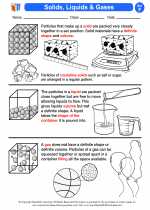 Solids, Liquids & Gases
Solids, Liquids & Gases  Worksheet/Answer key
Worksheet/Answer key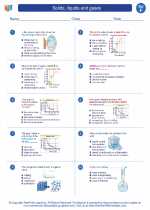 Solids, liquids and gases
Solids, liquids and gases  Worksheet/Answer key
Worksheet/Answer key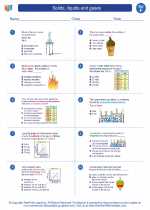 Solids, liquids and gases
Solids, liquids and gases  Worksheet/Answer key
Worksheet/Answer key Solids, liquids and gases
Solids, liquids and gases  Vocabulary/Answer key
Vocabulary/Answer key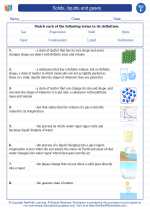 Solids, liquids and gases
Solids, liquids and gases  Vocabulary/Answer key
Vocabulary/Answer key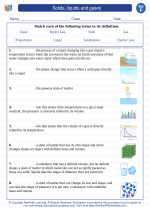 Solids, liquids and gases
Solids, liquids and gases 

 Activity Lesson
Activity Lesson
 Worksheet/Answer key
Worksheet/Answer key
 Worksheet/Answer key
Worksheet/Answer key
 Worksheet/Answer key
Worksheet/Answer key
 Vocabulary/Answer key
Vocabulary/Answer key
 Vocabulary/Answer key
Vocabulary/Answer key

The resources above cover the following skills:
PHYSICAL SCIENCE
Energy
Students who demonstrate understanding can:
Plan an investigation to determine the relationships among the energy transferred, the type of matter, the mass, and the change in the average kinetic energy of the particles as measured by the temperature of the sample.